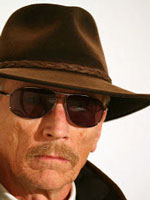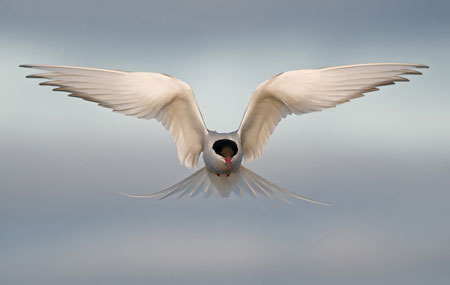
Bird photography is one of the most challenging and rewarding kinds of photography. Free range, hand-held, birds-in-flight photography requires long reach, high resolution, fast and accurate autofocus and effective vibration reduction. Today this equals big and heavy equipment, similar to that used for professional sports photography.
However, as opposed to sports, BIF usually does not leave room for the use of supports, tripods or even monopods. But one factor easing the requirements on equipment for BIF is that it’s normally done in daylight, often allowing decently tight apertures (large numbers) and low ISO in spite of very short exposure times.

That means the effective number of pixels must be kept high without sacrificing ISO beyond what’s practical for short exposure, daylight photography.
My thoughts go to smaller image sensors to take advantage of the cropping factor. The APS-C format produces a virtual 50% increase in reach by means of optical cropping, compared to a full-frame sensor. A Micro Four Thirds sensor offers a multiplication by two, and so forth.
The problem is obviously to offer both enough pixels and sufficient light sensitivity in the smaller sensors. I have searched the market and done the math using DxO and SenScore / LenScore on a number of cameras, lenses and combinations. Size, weight and cost aside the winners are those expected; big, heavy and expensive equipment. However there is no second place. Not because it can’t be done, but because the combinations required are presently not there.
Let’s assume that our desired reach is 600mm. A 24MP APS-C camera would then require a 400mm lens, preferably a DX format F4 lens to keep size, weight and cost under control. I cannot find such a lens. In the Nikon family the closest is a five kilograms heavy, nearly $12k costing F2.8 FX prime lens, the Nikkor 400mm F2.8E FL ED VR, a pro prime lens producing 21 P-MP. The desired lens is missing.
P-MP? It essentially replaces the older two-dimensional measurement of lens resolution expressed in line pairs. Except P-MP goes a step further by measuring it on a combination of lens and camera. It is actually the only way to measure, express and compare the resolution of a camera and lens combination.
I do not consider zoom lenses since most reproduce less than half the potential resolution of the camera. The closest to reaching the goal above is the new Nikkor 300mm F4 VR with a TC 14-E III teleconverter attached. The TC attachment drops the resolution of the pair from an estimated 18 P-MP to an estimated 16 P-MP. Comparing this to the full-frame, 600mm setup producing 24 P-MP, this might still be adequate for lightweight birding.
Choosing a Micro Four Thirds format camera is tempting considering the reputation of the OM-D lineup and similar lines of cameras. However, a 300mm prime lens for this camera with autofocus producing at least 12 P-MP final resolution is not available. The nearest lens, the Panasonic 100-300mm F4, produces barely half the resolution required.
We are now down to Nikon 1 camera system and similar equipped with an adapter to accept 200-300mm autofocus lenses. Even though the Nikon 1 sensor resolution is adequate at 18.4MP, the real world results are not encouraging. Nikon early promoted this camera for long reach sports and nature photography because of its 2.7x cropping factor. Actual results, however, are disappointing. It appears that despite an adequate sensor resolution the image quality of these very small pixels does not support a final image with a resolution rating much over 6 to 8 P-MP. An improved 16MP sensor with an optimized 200mm lens producing a final image quality of 12 P-MP would be much more tempting.
In conclusion it appears as if the camera manufacturers do not find bird photography enough of a market to offer an optimized combination of cameras and lenses. I wish they would.


